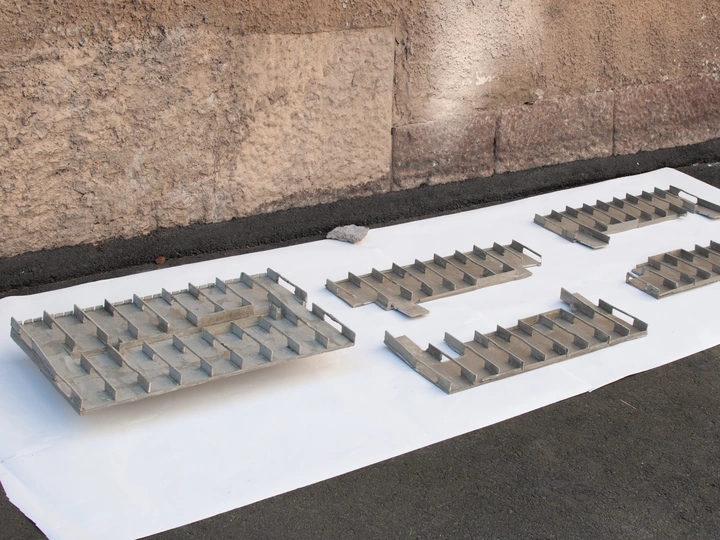Rekindled mundane: A Scale model journey

I’m Karita Rytivaara, an architect based in Helsinki working in-between architecture, visual arts and critical studies. I graduated from Aalto University in 2018 and have been working in a small renovation-focused architecture office, alongside developing a more independent practice rooted in scale model building, fragment collecting, photography, and writing.
During my studies, I became convinced that the environmental impact of architecture could be met via preservation. I became interested in the overlooked spaces of everyday life—the aging modern buildings that are often considered imperfect or monotonous.
I have also experimented with electronic music since 2016, and finding a connection with my interest in system-based architecture has been an interesting surprise—seeming almost an obvious connection to make. I see I have grown fond of finding meaning in at first sparse and repetitive surroundings and sound.
Recently, I’ve led and contributed to research and exhibition projects focused on vanishing modern infrastructure and architecture. These include Moderni metro (2025), supported by the Arts Promotion Centre Finland and the Finnish Cultural Foundation, and Riisuttu runko (Stripped Frame, 2021–22), funded by the Kone Foundation in collaboration with architect and curator Kaisa Karvinen. For both projects I edited and authored in the exhibition publication. I’ve also published articles in conferences, including Layers of the Invisible (5th Alvar Aalto Academy Seminar, 2023) and Revisiting Merihaka's Parking Structures P1 and P2 (Docomomo Conference, Santiago, 2024). Also I have held lectures and written reviews published at the Finnish Architecture Review and Austrian Architektur Aktuell.
I’ve taught part-time at Aalto University since 2019 in the architecture history department and remain curious about how knowledge is shared. The focus is on finding slow, hands-on modes of research that resist overconsumption and offer space for reflection.
In my practice I engage with the demolition of mainly postwar (2nd WW) structures and their hidden qualities through experimental scale models, fragment collecting, photography, and writing.
My work revolves around actively looking for undervalued modern everyday surroundings, giving them attention, researching original ideas, but also excavating their contemporary role—the politics of demolition, the vanishing of material memory, and how preserving the existing offers ecological insight. I explore the paradoxes of modern thinking—the way it still fuels overconsumption and results in the disappearance of its own physical remains. Just when a system-based, even monotonous, building begins to gather social and historical meaning, it vanishes.
Aging modernism is paradoxical in its buildings. For example, Finnish constructivists in the late 1960s were excited about Polish architect Oscar Hansen's idea of open form—a structure that could forever evolve and would never grow old. But the very real buildings that were created did age.
A scale model journey is an experiment. It is not a representation but an excavation—built by hand, from archival plans and salvaged material. Following the building’s structural logic becomes a way to trace its ideological foundations: rationalism and abstraction. Using materials of the time (concrete and steel) keeps the pieces connected to contemporary questions of demolition and the vanishing social and environmental value.
As part of LINA, I would like to explore how these methods could be adapted to new contexts—installed, taught, or shared in dialogue with the LINA network. Could the Scale model journey also become a study of the architectural method itself? Could the act of modeling become a proposal—not only for preservation, but for new forms of attention?